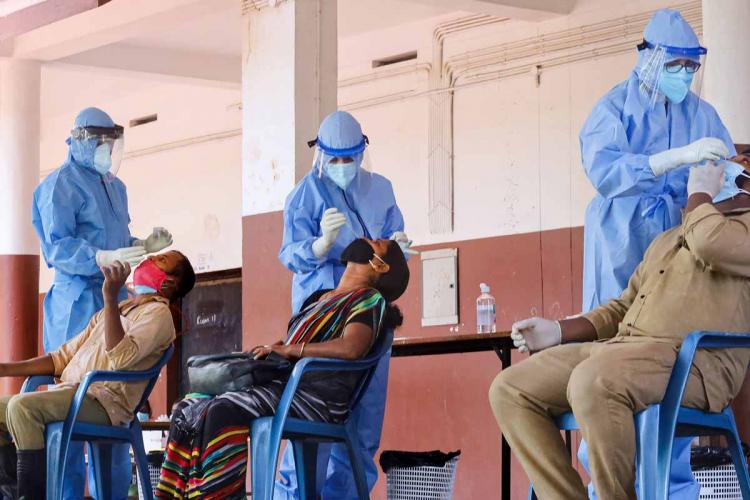
Three-fourths of Kerala population exposed to SARS-CoV-2 shows official sero survey
Three-fourths of the population in Kerala have been exposed to the virus that causes COVID-19 disease. This startling finding has been established by a sero survey conducted by the state’s health department.

Three-fourths of the population in Kerala have been exposed to the virus that causes COVID-19 disease. This startling finding has been established by a sero survey conducted by the state’s health department.
Nearly 70.01 per cent of unvaccinated people in the state were found with antibodies, which means that this significant percentage in Kerala had been exposed to the virus. Official statistics had revealed that 48.88 lakh people had caught the infection in the state.
In July this year, Kerala had registered the lowest seroprevalence rate of 44 per cent among 21 states in the 4th national seroprevalence study conducted by the Indian Council of Medical Research (ICMR). This proved at that time the exposure to the virus was low as compared to the national average, which was 67.6 per cent.
According to a Manorama Online report, Kerala’s health department had run antibody tests on 847 adults, of which 593 were seropositive. Those who had been exposed to the virus, either through vaccination or contracting the disease, have been considered as seropositive.
The study has also showed that about five per cent of those who caught the disease did not have enough antibodies to fight the virus clearly indicating that they had lost the immunity after getting cured.
But 95.55 per cent of those who had been infected had antibodies, and so did 81.7 per cent others who had not contracted the disease. Further, the health department also found 89.92 per cent of those totally vaccinated to be seropositive, said the Manorama Online report. The absence of antibodies in the remaining people revealed that they required a booster dose.
Also read: Kerala clears COVID death backlog; causes jump in national tally
The seroprevalence rate among the partially vaccinated was 81.7 per cent. The survey also threw up differences in seroprevalence rate among districts. While Pathanamthitta reported the highest seropositivity rate of 92.35 per cent, Wayanad had the lowest at 70.76 per cent. This large differences was termed as ‘uncommon’ by virologists, said media reports.
Interestingly, antibodies were largely found in 82.6 per cent of the adults, and in just 40.2 per cent of children. Seropositivity rate was highest, 85.78 per cent, among those in the 45-50 age group, while, it was 77.24 per cent among those aged 75 and above, who were administered the vaccine in the initial phase of the inoculation campaign.
The virus did not differentiate on basis of gender, as the survey showed not much difference in seroprevalence between male at 82.77 per cent and females at 82.47 per cent. Among the above poverty line category, 83.53 per cent had the antibodies, while it was 81.51 per cent among the below poverty line section.
An urban-rural divide too was also not visible in the survey. As many as 81.75 per cent were found seropositive in corporation areas, while the seropositive rate was 83.44 per cent and 82.15 per cent in municipality and panchayat limits.


